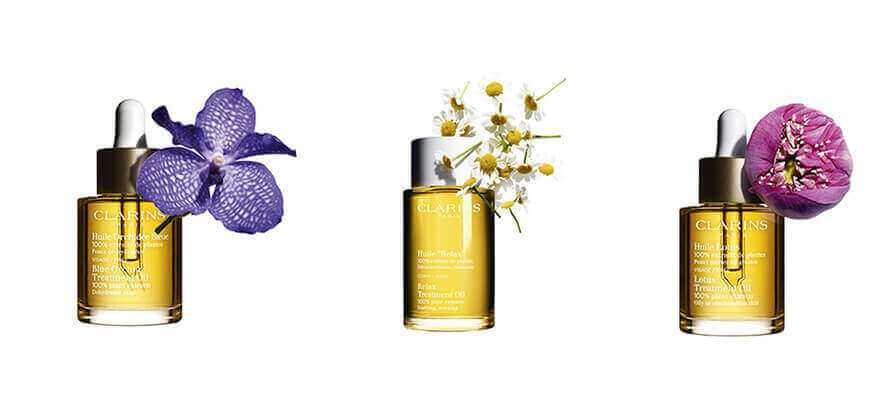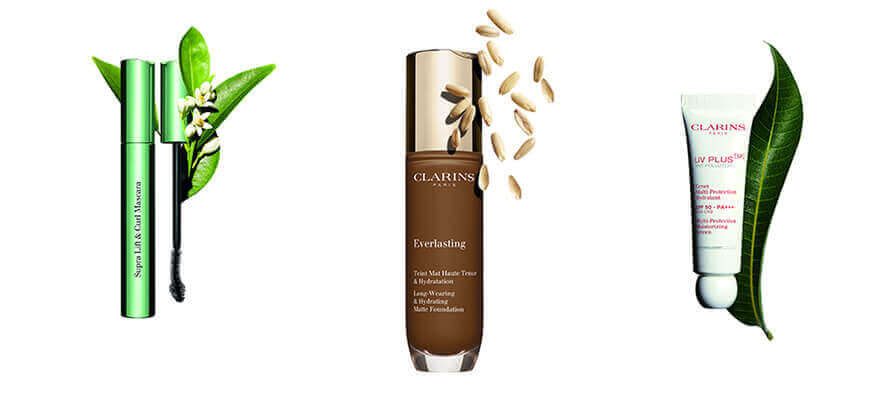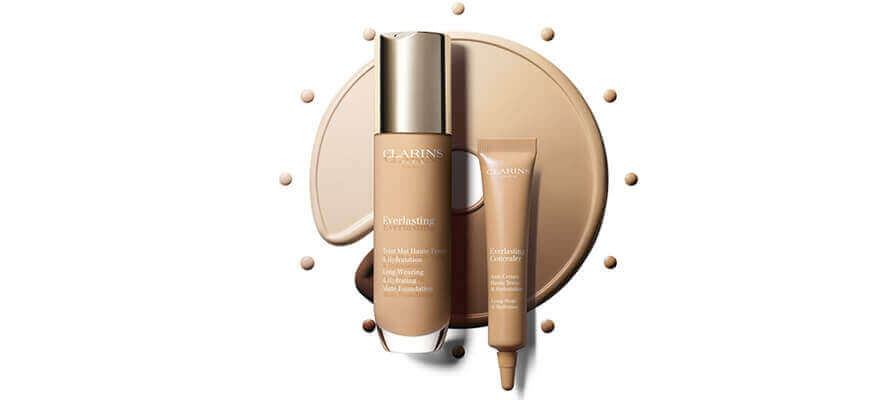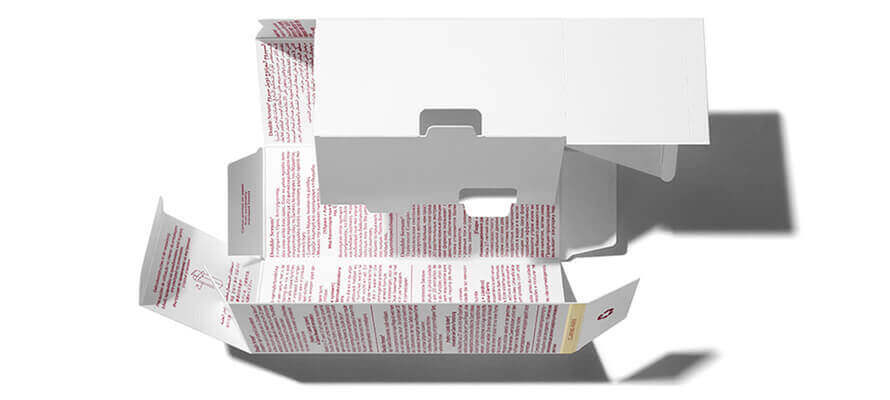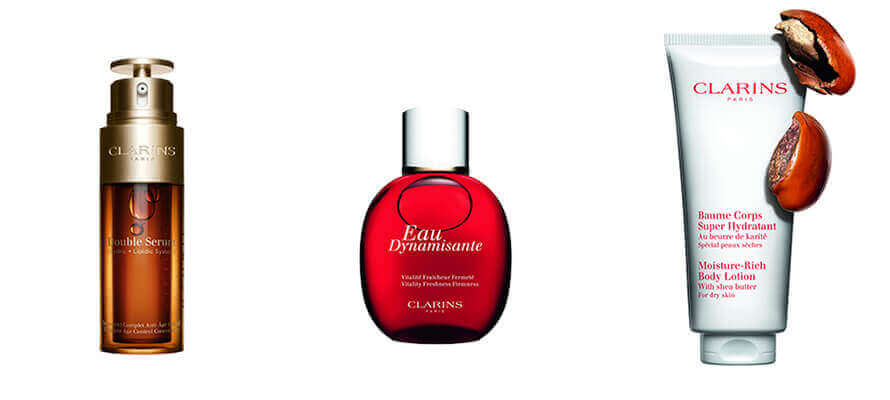Clarins. The beautiful, the good, the environment
Cosmetics created to combine beauty and wellbeing. Clarins also differentiates itself from its competitors in terms of environmental sustainability, attention to people and scientific research. Marie-Hélène Lair, Director of Innovation at Clarins, tells us about this.
By Marilde Motta | On PRINTlovers #89
Clarins’ history in the world of cosmetics began in Paris in 1954 and has grown to an international dimension with a presence in 150 countries. Jacques Courtin-Clarins started this success story with his innovative idea of cosmetics based on beauty and wellbeing. An inseparable combination that would guide all subsequent choices of responsibility towards people and the environment, of love for natural and organic raw materials. Clarins is still led by the Courtin-Clarins family, whose members are committed to giving concrete value to the héritage every day and to updating strategies in an increasingly challenging world that requires permanent innovation and sincere attention to the environment. The decision to revise the packaging, without changing the strongly identifying iconic elements, has necessarily opened up new ways of finding creative and efficient solutions, which Marie-Hélène Lair explains to us.
What social and environmental concerns convinced Clarins to change its cosmetics and perfume packaging?
The packaging modifications we plan to achieve are in line with our CSR vision: Making life more beautiful, Passing on a more beautiful planet”. Adjusting outer cartons, reducing packaging, choosing materials from renewable sources, incorporating recycled material and creating a new refill system in boutiques — Clarins packaging is the subject of ongoing research aimed at reducing its environmental footprint to a strict minimum. To go further still, Clarins commits to achieving plastic neutrality by 2025. This ambitious goal is founded on a principle similar to that of carbon neutrality. For the group, it means putting in place new recycling and offset programmes, together with a 30% reduction in plastic usage.
How is your supply chain organized to ensure that, at every level, the packaging complies with sustainability criteria?
Clarins reinforced its program to accompany its most important suppliers (above 5000 euros annually) using a ratings platform developed by Ecovadis. More than 90% of purchases made by the head office were concerned. The goal is not only to ensure that the company is working with partners who share the same values and vision, but also to help those who are looking to make progress and to share knowledge and good practices. Four subsidiaries were involved in this quest in 2019: Mexico, Switzerland Hub (agents and travel retail), China and Japan. The goal is to extend this system to all subsidiaries and adopt the Group’s purchasing policy to minimal thresholds around the four CSR areas: environment, business ethics, human rights and responsible purchasing.
What are the turning points?
For the last several years, Clarins has adopted the ideas of ‘eco-development’ into every new packaging development project. In 2019, the Group put in place an internal tool called the ‘Pack Score’ which, much like the ‘Green Score’ for ingredients and formulas, made it possible to evaluate and compare different packaging ideas for the same product. The goal is to continually improve 100% of new developments around 8 criteria of eco-development: material and its impact, the percentage of recycled material, lightness, bulk, decorative elements, simplicity of the packaging, end of life considerations and the level of restitution of the formula. This activity helps make the Group’s vision a reality: reduce resource use, increase the amount of recycled materials used and develop recyclable packaging. This approach is a global one. It favours responsible materials (all outer cartons and corrugated pieces are sourced from sustainably managed forests) and reducing weight and volume (suppression of product wedges and inserts), along with achieving lighter containers (use of recyclable and recycled material). New packaging ideas are constantly being studied with suppliers to use less resources but also to develop ways to refill products. Clarins’ teams are working to make steady progress in terms of incorporating recycled materials in packaging . Since 2012, all-glass packaging used by the Clarins brand has contained at least 25% recycled glass and since 2019, all new plastic packaging should incorporate some PCR (post-consumer recycled) plastic. The Group’s commitment is to reach 100% recyclable packaging by 2025 by favouring a certain approach to eco-development: the least number of different materials possible, materials that are easy to recycle and can be easily separated by the customer to facilitate sorting when the product is finished.
Do you think a call for rationality is necessary when addressing customers to explain the changes in your packaging?
At Clarins, we are fond of consumer listening, from our creation in 1954.
We know that our faithful consumers want to know more details about our formulas and packagings. We are optimizing our digital communication, by fueling Clarins.com with more data on our ingredients and packagings (raw materials, refill programmes, recyclabililty assets).
What do you think is the optimal container size for the different categories of cosmetics and perfumes?
All our products are already available in several sizes for sampling or travelling. At Clarins our vision is less dealing between scarcity or perception of preciousness than offering to consumers the product size adapted to their daily usage.
It’s easy to benefit from online solutions via smartphone; what plans does Clarins have?
At Clarins, we had already developed, before the Covid crisis, many gaming, tutos, or applications methods, available on smartphones via QR code. We are developing more and more assets to spread our holistic approach online, such as many application gestures to boost the efficacy of our skincare formulas.
